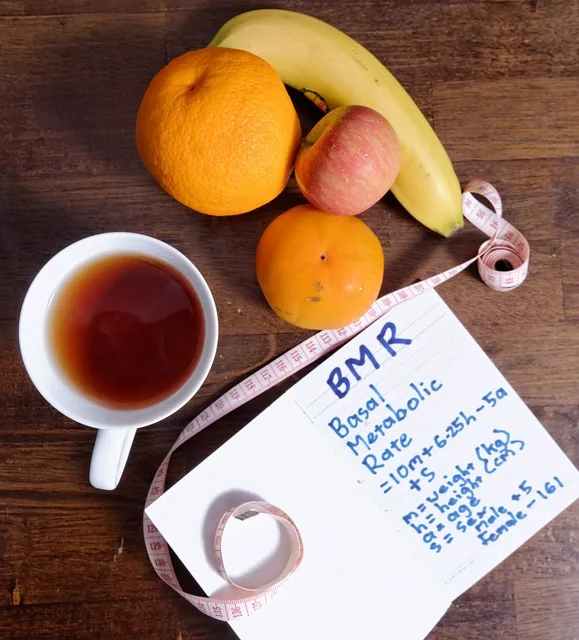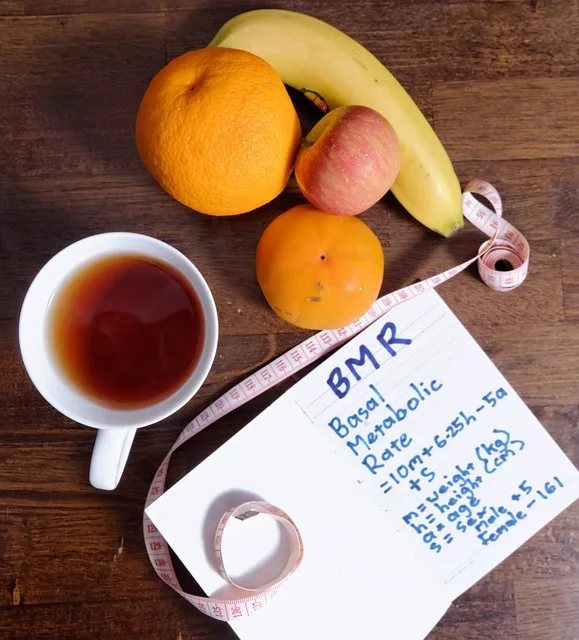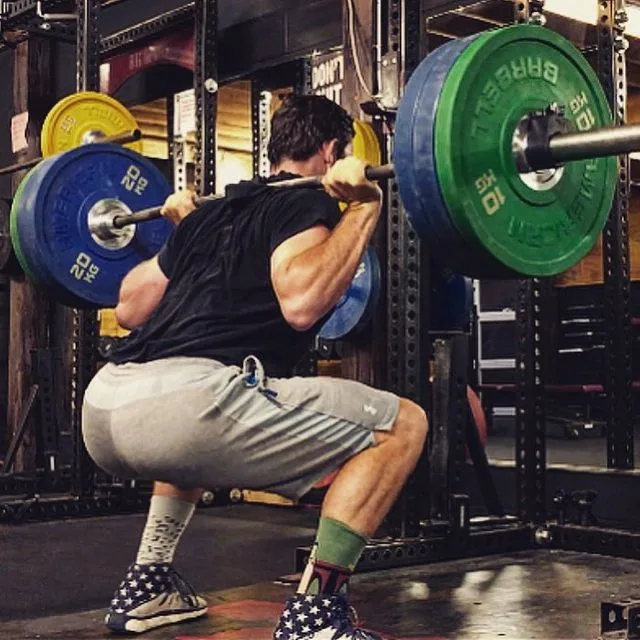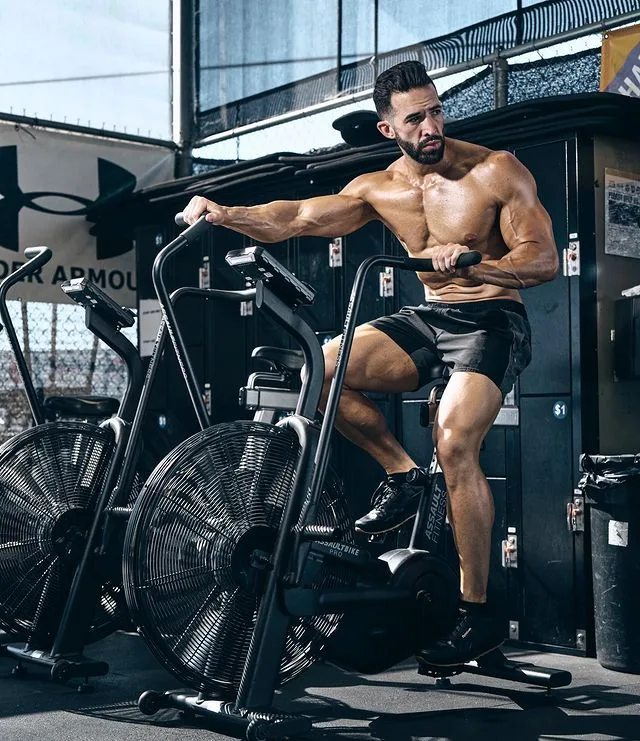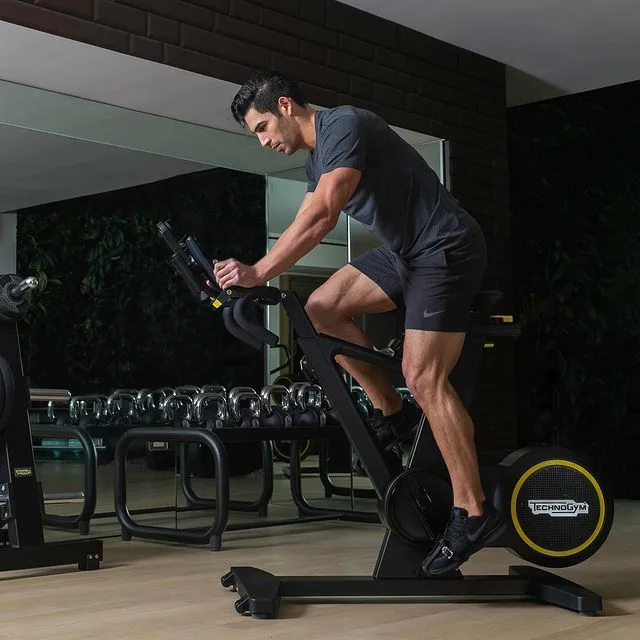Resistance training with this comprehensive guide which take your fitness to the next level. Get the most out of your workout with our tips and methods for a successful strength training program.
Continue reading and learn everything you need to know about this training from the benefits to the proper form and techniques, this article will provide you with the tools to build muscle, strength, and power.
What is Resistance training?

Resistance training is a type of physical exercise that uses resistance to muscle contraction to build the strength, anaerobic endurance, and size of skeletal muscles. The resistance can be applied in various ways such as using bodyweight, resistance bands, dumbbells, barbells, or weight machines. The goal of resistance training is to increase muscle mass, strength, power, and endurance. It is often done in combination with other types of exercise like cardiovascular training to improve overall fitness and health. Resistance training is recommended for people of all ages and fitness levels, as it can help to improve bone density, boost metabolism, and reduce the risk of chronic diseases.
Key aspects that make this training unique
There are many potential benefits that make resistance training unique compared to other types of exercise, including:
- Progressive overload: Resistance training is based on the principle of progressive overload, which means that in order to continue to see improvements in muscle strength and size, the resistance or weight used must be gradually increased over time. This sets it apart from other forms of exercise that may not have a specific progression plan. 1
- Versatile: Resistance training can be done using a variety of equipment, including bodyweight, resistance bands, dumbbells, barbells, and weight machines. This allows for a diverse training program and the ability to target different muscle groups.
- Whole-body workout: Resistance training exercises often target multiple muscle groups at once, providing a full-body workout. This can be more efficient than other types of exercise that only target specific areas.
- Targeted muscle development: Resistance training is specifically designed to target the development of skeletal muscle, whereas other forms of exercise such as cardio may have more general health benefits.
- Improving bone density: Resistance training has been shown to increase bone density, which can help to reduce the risk of osteoporosis, a condition that causes bones to become weak and brittle. 2
- Increased muscle mass: Resistance training can help to increase muscle mass, which in turn can boost metabolism and aid in weight loss. 3
- Customizable: Resistance training can be tailored to the individual’s specific goals and fitness level. It can be used to build muscle mass, increase strength, or improve endurance.
- Improving neuromuscular coordination: Resistance training can improve the coordination between the nervous system and muscles, which can improve balance, agility and overall movement. 4 5
- Improved cardiovascular health: Resistance training can improve cardiovascular health by increasing heart and lung function, and reducing the risk of heart disease. 6 7 8 9
- Improved insulin sensitivity: Resistance training has been shown to improve insulin sensitivity, which can help to reduce the risk of diabetes. 10 11
- Reduced risk of injury: Resistance training can improve balance, coordination, and overall movement, which can help to reduce the risk of injury. 12
- Reduced stress and improved mental health: This training has been shown to reduce stress and improve mental health by increasing the release of endorphins, also known as “feel-good” hormones. 13 14 15
- Increased Sport Performance: This training can improve sport performance, as it helps to improve power, strength, and endurance which are essential in various sports. 16 17
- Suitable for all ages: Resistance training is suitable for people of all ages and fitness levels, and can be adapted to meet the needs of different populations, such as older adults or people with disabilities. 18 19
Different resistance training methods
The dynamic effort method, the maximal effort method, and the repetition method are all different resistance training methods that are used to achieve different goals.
In resistance training, the number of sets and reps refer to the number of times a specific exercise is performed.
A set is a group of repetitions (reps) of an exercise. For example, if you perform 10 bicep curls, that would be considered 1 set of 10 reps.
The number of reps refers to the number of times a specific exercise is performed within a set. The number of reps can vary depending on the individual’s goals, fitness level, and the specific exercise being performed.
Here are some common rep ranges and their corresponding goals:
- The dynamic effort method: This method uses sub-maximal weights, but focuses on moving the weight as quickly as possible to develop explosive power. This method typically uses light to moderate weights, and a high number of reps, typically in the range of 1–5 reps per set, with shorter rest intervals between sets. 20 21
- The maximal effort method: This method focuses on lifting the heaviest weight possible for one repetition, to increase muscle strength and power. This method typically uses heavy weights, and a low number of reps, typically in the range of 1–3 reps per set, with longer rest intervals between sets. 22 23 24 25
- The repetition method: This method focuses on lifting a weight to muscle failure, or the point at which the muscle can no longer perform another repetition, to increase muscle endurance and size. This method typically uses moderate weights, and a moderate number of reps, typically in the range of 8–12 reps per set, with moderate rest intervals between sets. 26
- High reps (12–15 reps per set) and light weight: This rep range is often used for endurance training and to increase muscle endurance and cardiovascular fitness. 23 27
- Moderate reps (8-12 reps per set) and moderate weight: This rep range is typically used for muscle hypertrophy (growth) and overall strength development. 28 23
- Low reps (1-5 reps per set) and heavy weight: This rep range is typically used for power development and to increase muscle strength and power.
It’s important to note that the number of sets can also vary depending on the individual’s goals, fitness level, and the specific exercise being performed. Typically, more sets will be needed for muscle hypertrophy, and fewer sets for endurance. 23 27
Proper rest and recovery time between sets is also essential, so that muscles have time to recover and grow stronger.
It’s essential to have a well-designed program that takes into consideration all these variables, and to progressively increase resistance, reps and sets to avoid overuse injuries and to achieve optimal results.
How to Start Strength Training or Resistance Training?
Starting a strength training or resistance training program can be a great way to improve your overall fitness and health. Here are some steps to help you get started:
Consult a healthcare professional: Before beginning any new exercise program, it’s important to consult a healthcare professional to ensure that you are healthy enough to start strength training.
Set realistic goals: Determine what your goals are for starting strength training. Do you want to build muscle, increase strength, or improve endurance? Setting realistic goals will help you stay motivated and on track.
Learn proper form: Learn proper form for each exercise to prevent injury and ensure that you are targeting the correct muscle groups. You can watch videos or hire a personal trainer for this purpose.
Start with a full-body workout: Begin with a full-body workout that includes exercises for all major muscle groups. This will help to prevent muscle imbalances and ensure that you are getting a well-rounded workout.
Use a variety of equipment: Try using a variety of equipment, such as dumbbells, barbells, resistance bands, and weight machines to keep your workout interesting and to target different muscle groups.
Gradually increase weight: Start with a weight that you can comfortably lift and gradually increase the weight as you become stronger.
Add cardio exercises: Add cardio exercises to your workout program to improve cardiovascular fitness.
Keep track of your progress: Keep track of your progress by writing down the weight and reps for each exercise. This will help you to see how far you have come and to set new goals for the future.
Warm up and cool down: It’s essential to properly warm up your muscles before starting your strength training session, to prepare them for the workout and prevent injury. A good warm-up can include some light cardio, stretching, and dynamic movements. Similarly, it’s essential to cool down after your workout, to gradually decrease your heart rate, stretch your muscles and help them recover.
Listen to your body: Pay attention to your body’s signals and stop if you feel pain or discomfort. If you experience pain during or after a workout, it’s essential to rest and seek the advice of a healthcare professional.
Rest and recover: Allow enough time for rest and recovery between strength training sessions. Your muscles need time to repair and grow stronger, and overtraining can lead to injury and burnout.
Consider hiring a personal trainer: A personal trainer can help you to design a workout program that is tailored to your specific needs and goals. They can also provide guidance on proper form, motivation, and progress tracking.
Be consistent: Regular this training is key for progress, consistency is the key to reaching your goals. Make sure to incorporate this training into your routine at least 2–3 times a week.
Best training exercises
The best exercises for you will depend on your individual goals, fitness level, and equipment availability. It’s always a good idea to mix up exercises and not to focus on only one muscle group.
There are many exercises that can be used in a resistance training program, but some of the best exercises for overall fitness and strength are:
- Squats: The squat exercises target the quadriceps, hamstrings, glutes, and lower back, and are great for building leg strength and power.
- Deadlifts: The deadlift exercises target the glutes, hamstrings, and lower back, and are great for building overall strength and power.
- Bench press: The bench press exercises target the chest, shoulders, and triceps, and are great for building upper body strength and power.
- Pull-ups: The pull-ups exercises target the back, shoulders, and biceps, and are great for building upper body strength and power.
- Rows: The row exercises target the back, shoulders, and biceps, and are great for building upper body strength and power.
- Lunges: These exercises target the quadriceps, hamstrings, and glutes, and are great for building leg strength and power.
- Overhead press: These overhead press exercises target the shoulders, triceps, and upper back, and are great for building upper body strength and power.
- Bicep curls: These exercises target the biceps and are great for building upper body strength and power.
- Tricep extensions: These exercises target the triceps and are great for building upper body strength and power.
- Planks: The plank exercises target the core, and are great for improving core stability and strength.
Common misconceptions
There are several common misconceptions about resistance training that can lead to confusion and misinformation. Here are a few:
Resistance training will make women bulky:
This is a common misconception, as women do not have enough of the hormone testosterone to build large amounts of muscle mass. Women who strength train will typically see an increase in muscle tone and definition, but not bulk.
Resistance training is only for bodybuilders:
Resistance training is not just for bodybuilders, it is beneficial for people of all ages, fitness levels and goals, such as building muscle, increasing strength, improving endurance, or weight loss.
Resistance training is only for men:
This is not true, resistance training is beneficial for both men and women.
Resistance training is dangerous:
Resistance training can be safe when done correctly, with proper form and technique, and under the guidance of a healthcare professional.
Resistance training is only for specific muscle groups:
Resistance training can be done to target all major muscle groups in the body, including legs, arms, back, chest, and core.
Resistance training can only be done with weights:
Resistance training can also be done using bodyweight exercises, resistance bands, and weight machines, providing a versatile workout options.
Resistance training is only for the young:
Resistance training is beneficial for people of all ages and can be adapted to meet the needs of different populations, such as older adults or people with disabilities.
Bottom line
Resistance training, also known as strength training or weightlifting, is a type of exercise that uses resistance to build muscle strength and power.
It is a versatile and effective form of exercise that can be tailored to the individual’s specific goals and fitness level. It has many scientific benefits, including increasing muscle strength and size, improving bone density, increasing metabolism, and reducing the risk of injury.
To start a training program, it is important to consult a healthcare professional, set realistic goals, learn proper form, start with a full-body workout, use a variety of equipment, and gradually increase weight. It’s also essential to rest and recover, be consistent and enjoy the process.
With the correct approach and guidance, resistance training can be a safe and effective way to improve overall fitness and health.
- American College of Sports Medicine. “American College of Sports Medicine position stand. Progression models in resistance training for healthy adults.” Med Sci Sports Exerc. 2009 Mar;41(3):687-708. doi: 10.1249/MSS.0b013e3181915670. PMID: 19204579.[↩]
- Hong AR, Kim SW. “Effects of Resistance Exercise on Bone Health.” Endocrinol Metab (Seoul). 2018 Dec;33(4):435-444. doi: 10.3803/EnM.2018.33.4.435. PMID: 30513557; PMCID: PMC6279907.[↩]
- Schoenfeld BJ, Contreras B, Krieger J, Grgic J, Delcastillo K, Belliard R, Alto A. “Resistance Training Volume Enhances Muscle Hypertrophy but Not Strength in Trained Men.” Med Sci Sports Exerc. 2019 Jan;51(1):94-103. doi: 10.1249/MSS.0000000000001764. PMID: 30153194; PMCID: PMC6303131.[↩]
- Sale DG. “Neural adaptation to resistance training.” Med Sci Sports Exerc. 1988 Oct;20(5 Suppl):S135-45. doi: 10.1249/00005768-198810001-00009. PMID: 3057313.[↩]
- Richard G. Carson. “Changes in muscle coordination with training.” Journal of Applied Physiology. Vol. 101, No. 5. 01 NOV 2006. doi: 10.1152/japplphysiol.00544.2006.[↩]
- Randy W. Braith and Kerry J. Stewart. “Resistance Exercise Training.” Circulation. Vol. 113, No. 22. 2006;113:2642–2650. doi: 10.1161/CIRCULATIONAHA.105.584060.[↩]
- Nystoriak MA, Bhatnagar A. “Cardiovascular Effects and Benefits of Exercise.” Front Cardiovasc Med. 2018 Sep 28;5:135. doi: 10.3389/fcvm.2018.00135. PMID: 30324108; PMCID: PMC6172294.[↩]
- Pinckard K, Baskin KK, Stanford KI. “Effects of Exercise to Improve Cardiovascular Health.” Front Cardiovasc Med. 2019 Jun 4;6:69. doi: 10.3389/fcvm.2019.00069. PMID: 31214598; PMCID: PMC6557987.[↩]
- Michael L. Pollock, Barry A. Franklin, Gary J. Balady, Bernard L. Chaitman, Jerome L. Fleg, Barbara Fletcher, Marian Limacher, Ileana L. Piña, Richard A. Stein, Mark Williams and Terry Bazzarre. “Resistance Exercise in Individuals With and Without Cardiovascular Disease.” Circulation. Vol. 101, No. 7. 2000;101:828–833. doi: 10.1161/01.CIR.101.7.828.[↩]
- Dela F, Kjaer M. “Resistance training, insulin sensitivity and muscle function in the elderly.” Essays Biochem. 2006;42:75-88. doi: 10.1042/bse0420075. PMID: 17144881.[↩]
- Niemann MJ, Tucker LA, Bailey BW, Davidson LE. “Strength Training and Insulin Resistance: The Mediating Role of Body Composition.” J Diabetes Res. 2020 May 8;2020:7694825. doi: 10.1155/2020/7694825. PMID: 32455135; PMCID: PMC7235686.[↩]
- Dunsky A. “The Effect of Balance and Coordination Exercises on Quality of Life in Older Adults: A Mini-Review.” Front Aging Neurosci. 2019 Nov 15;11:318. doi: 10.3389/fnagi.2019.00318. PMID: 31803048; PMCID: PMC6873344.[↩]
- Strickland JC, Smith MA. “The anxiolytic effects of resistance exercise.” Front Psychol. 2014 Jul 10;5:753. doi: 10.3389/fpsyg.2014.00753. PMID: 25071694; PMCID: PMC4090891.[↩]
- Sharma A, Madaan V, Petty FD. “Exercise for mental health.” Prim Care Companion J Clin Psychiatry. 2006;8(2):106. doi: 10.4088/pcc.v08n0208a. PMID: 16862239; PMCID: PMC1470658.[↩]
- Amenda Ramirez and Len Kravitz, Ph.D. “Resistance Training Improves Mental Health.” American Journal of Lifestyle Medicine, 4(5), 377-396.[↩]
- Buckner SL, Jessee MB, Dankel SJ, Mattocks KT, Abe T, Loenneke JP. “Resistance exercise and sports performance: The minority report.” Med Hypotheses. 2018 Apr;113:1-5. doi: 10.1016/j.mehy.2018.02.006. Epub 2018 Feb 7. PMID: 29523284.[↩]
- Zachary M. Townsend. “Impact of Resistance Training on Sports Performance and Muscular Adaptations.” Townsend. Int J Sports Exerc Med 2022, 8:218. Volume 8. DOI: 10.23937/2469-5718/1510218.[↩]
- Dahab KS, McCambridge TM. “Strength training in children and adolescents: raising the bar for young athletes?” Sports Health. 2009 May;1(3):223-6. doi: 10.1177/1941738109334215. PMID: 23015875; PMCID: PMC3445252.[↩]
- Hart PD, Buck DJ. The effect of resistance training on health-related quality of life in older adults: Systematic review and meta-analysis. Health Promot Perspect. 2019 Jan 23;9(1):1-12. doi: 10.15171/hpp.2019.01. PMID: 30788262; PMCID: PMC6377696.[↩]
- Cuevas Rivera D, Strobel A, Goschke T, Kiebel SJ. “Modeling Dynamic Allocation of Effort in a Sequential Task Using Discounting Models.” Front Neurosci. 2020 Mar 24;14:242. doi: 10.3389/fnins.2020.00242. PMID: 32269509; PMCID: PMC7109442.[↩]
- Eston R, Evans HJ. “The validity of submaximal ratings of perceived exertion to predict one repetition maximum.” J Sports Sci Med. 2009 Dec 1;8(4):567-73. PMID: 24149599; PMCID: PMC3761544. Available from: ncbi.nlm.nih.gov/pmc/articles/PMC3761544.[↩]
- Maffiuletti NA, Aagaard P, Blazevich AJ, Folland J, Tillin N, Duchateau J. “Rate of force development: physiological and methodological considerations.” Eur J Appl Physiol. 2016 Jun;116(6):1091-116. doi: 10.1007/s00421-016-3346-6. Epub 2016 Mar 3. PMID: 26941023; PMCID: PMC4875063.[↩]
- Schoenfeld BJ, Grgic J, Van Every DW, Plotkin DL. “Loading Recommendations for Muscle Strength, Hypertrophy, and Local Endurance: A Re-Examination of the Repetition Continuum.” Sports (Basel). 2021 Feb 22;9(2):32. doi: 10.3390/sports9020032. PMID: 33671664; PMCID: PMC7927075.[↩][↩][↩][↩]
- Moss BM, Refsnes PE, Abildgaard A, Nicolaysen K, Jensen J. “Effects of maximal effort strength training with different loads on dynamic strength, cross-sectional area, load-power and load-velocity relationships.” Eur J Appl Physiol Occup Physiol. 1997;75(3):193-9. doi: 10.1007/s004210050147. PMID: 9088836.[↩]
- Sarabia JM, Moya-Ramón M, Hernández-Davó JL, Fernandez-Fernandez J, Sabido R. “The effects of training with loads that maximise power output and individualised repetitions vs. traditional power training.” PLoS One. 2017 Oct 20;12(10):e0186601. doi: 10.1371/journal.pone.0186601. PMID: 29053725; PMCID: PMC5650159.[↩]
- Santanielo N, Nóbrega SR, Scarpelli MC, Alvarez IF, Otoboni GB, Pintanel L, Libardi CA. “Effect of resistance training to muscle failure vs non-failure on strength, hypertrophy and muscle architecture in trained individuals.” Biol Sport. 2020 Dec;37(4):333-341. doi: 10.5114/biolsport.2020.96317. Epub 2020 Jul 5. PMID: 33343066; PMCID: PMC7725035.[↩]
- Schoenfeld BJ, Peterson MD, Ogborn D, Contreras B, Sonmez GT. “Effects of Low- vs. High-Load Resistance Training on Muscle Strength and Hypertrophy in Well-Trained Men.” J Strength Cond Res. 2015 Oct;29(10):2954-63. doi: 10.1519/JSC.0000000000000958. PMID: 25853914.[↩][↩]
- Krzysztofik M, Wilk M, Wojdała G, Gołaś A. “Maximizing Muscle Hypertrophy: A Systematic Review of Advanced Resistance Training Techniques and Methods.” Int J Environ Res Public Health. 2019 Dec 4;16(24):4897. doi: 10.3390/ijerph16244897. PMID: 31817252; PMCID: PMC6950543.[↩]


